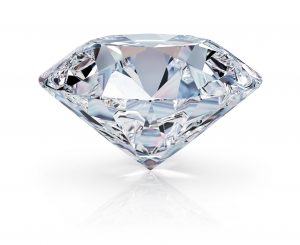Diamonds: Bridging the Divide Between Tradition and Innovation
Diamonds are forever. But are some more forever than others?
In the late 1940s, De Beers changed the diamond industry forever by introducing the diamond engagement ring as a symbol of eternal love. Ever since, the diamond industry has grown steadily, reaching a 97.45 USD billion dollar market size in 2022, and forecasted to reach a value of 138.53 billion by 2030. However, beneath the glittering surface lies a hot debate: natural diamonds versus their lab-grown counterparts.
In recent years, a new contender has entered the diamond market: lab-grown diamonds, or LGDs. Despite representing only 2% of the current market, they are experiencing explosive growth at a CAGR of 15% year over year. The US Federal Trade Commission expanded its definition to include lab-grown stones, further legitimizing their place in the market.
So, what’s so special about the LGD industry? Lab-grown diamonds provide a less expensive, scientifically identical, and more environmentally friendly alternative to naturally mined diamonds. Price is a main differentiator – while one may pay $23,000 for a 2-carat halo ring of natural diamonds, the lab-grown version of the same ring might cost $6,000.
The traditionalist and lab-grown approaches cater to different consumer preferences and market segments: traditional diamonds hold a value with their geological history, rarity, and resale value, while lab-grown diamonds provide a more affordable, sustainable, and ethical alternative. Some consumers hold a strong emotional connection to the idea that a diamond has endured billions of years of geological processes – therefore will appreciate a natural diamond. In contrast, other consumers may prioritize the cost, and will therefore appreciate a LGD.
While many lab-grown diamonds are often touted as environmentally friendly, not all are as clean as they seem. Many companies source raw materials from petrochemicals such as methane. Aether, however, the world’s first and only B Corp-certified diamond company, sources its materials directly from thin air. Aether is carbon-negative and climate-positive, removing more CO2 from the atmosphere than is emitted during production. This sustainable approach addresses environmental concerns while offering consumers a guilt-free alternative. For each carat Aether produces, the company pledges to remove 20 metric tons of carbon dioxide from the atmosphere (more than the average American’s carbon annual footprint) with its signature direct air capture, as well as supplemental processes such as geological sequestration, mineral sequestration, and reforestation.
The traditional players of Place Vendôme are starting to notice LGDs. One brand has actually already announced a capsule collection made of lab-grown diamonds, with an aim to offer “what nature has not created.”
In conclusion, the debate between natural and lab-grown diamonds is not a winner-takes-all contest. The market, along with all its participants, recognizes that these are two distinct and complementary options. It’s not a matter of choosing one over the other; rather, it’s a matter of catering to different audiences with unique values, brands, and narratives. As the industry evolves, it’s clear that diamonds will continue to bridge the divide between tradition and innovation, offering something for everyone in the world of luxury and romance.

References
1. Bloomberg. (2023, July 11). Growing Demand for Diamond Market – Increasing disposable income to Drive the Market Size to USD 138.53 Billion with a. Bloomberg.com. Retrieved October 12, 2023, from https://www.bloomberg.com/press-releases/2023-07-11/growing-demand-for-diamond-market-increasing-disposable-income-to-drive-the-market-size-to-usd-138-53-billion-with-a
2. The Economist. (2019, March 18). Can lab-grown diamonds replace the real thing? The Economist. Retrieved October 12, 2023, from https://www.economist.com/1843/2019/03/18/can-lab-grown-diamonds-replace-the-real-thing
3. Huffington Post. (2023, May 8). What’s The Difference Between Natural And Lab-Grown Diamonds? HuffPost. Retrieved October 12, 2023, from https://www.huffpost.com/entry/difference-between-natural-and-lab-grown-diamonds_l_6440421be4b04997b56f21ac
4. WWD. (2023, September 12). EXCLUSIVE: Fred Premieres High Jewelry Set Featuring Blue Lab-grown Diamonds. WWD. Retrieved October 12, 2023, from https://wwd.com/accessories-news/jewelry/fred-high-jewelry-launch-blue-lab-grown-diamonds-force-10-duality-1235789762/




